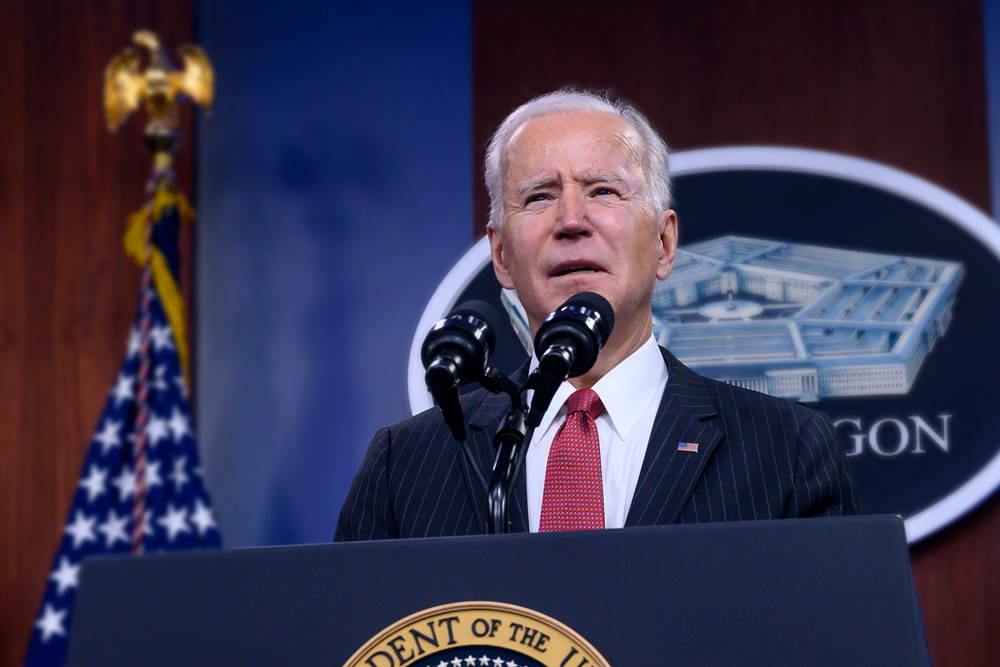The $2-trillion proposal is light on direct ag aid but could ultimately reshape the way farmers do business.

It is, at long last, Infrastructure Week in Washington. It likely will be for months to come, too.
President Joe Biden on Wednesday formally unveiled a $2-trillion infrastructure proposal during an afternoon speech that kicked off what is expected to be a prolonged sales pitch for the sweeping package. “It’s not a plan that tinkers around the edges,” he said. “It’s a once-in-a-generation investment in America unlike anything we’ve done since we built the interstate highway system and the space race decades ago.”
Dubbed the American Jobs Plan, the eight-year spending proposal promises to modernize 20,000 miles of roads, repair 10,000 bridges and improve the drinking water in 400,000 schools and child-care facilities, among myriad other improvements to the built environment in the United States.
Compared to the $1.9-trillion coronavirus aid package, the infrastructure package is light on direct aid to the agriculture sector. But, if enacted, the infrastructure plan could ultimately have a bigger impact on American farmers over the long run—affecting everything from how they farm to how and where they sell their products.
Farmers rely on the nation’s roads, railways and waterways to transport their food and fiber to domestic and global markets. Those paths are rarely a straight line. A soybean harvest meant for export, for instance, may use all three of those transportation modes as it travels from field to storage to processing plant to port, all before it even leaves the United States. Lost time along the way from congestion and other delays is lost money for farmers in the short term and lost market share in the long term, which is why groups such as the American Farm Bureau Federation and the National Cattlemen’s Beef Association have been pushing Biden to improve rural transportation networks since he took office. This plan would do just that via $115 billion for roads and bridges, $80 billion for railways and $17 billion for waterways and ports.
The more noticeable impact on farmers’ everyday lives, meanwhile, would be the $100 billion that Biden wants to spend bringing affordable broadband internet service to every American, including the estimated 35 percent of whom currently lack reliable access.
Agriculture, like pretty much every other industry, is an increasingly high-tech and data-driven endeavor. Farmers can use the internet to track the weather in real time, to guide GPS-enabled tractors and other machinery and to utilize a whole host of other precision-farming techniques that take into account soil moisture levels, plant health and other metrics. Internet access also helps on the business side of things, allowing farmers to find the best deals on seeds, fertilizer and equipment, as well as the best prices for their products.
Internet access, however, is not currently a given on American farms. According to the US Department of Agriculture, 1 in 4 farmers lacked access in 2019, the most recent year for which data is available. Meanwhile, having internet access isn’t the same thing as having reliable access. A poll conducted that same year by the United Soybean Board found that nearly 60 percent of US farmers believed poor connectivity was negatively impacting their business. There’s not a lot that farmers can do about that on their own, either, since those in rural areas often only have a single provider from which to choose.
All of this is why, broadly speaking, expanding rural broadband has support on both sides of the political aisle, including with farm-state Republicans such as Sen. John Boozman, the ranking member on the Agriculture Committee. It’s also been a top priority at the US Department of Agriculture in administrations both past and present. USDA Secretary Tom Vilsack has touted broadband access as a boon to American farmers, and his predecessor, Sonny Perdue, went as far as to suggest that rural broadband would be as revolutionary in this century as rural electrification was in the last one.
But general support for rural broadband isn’t the same as specific support for Biden’s plan, particularly given that it is nested inside his larger multi-trillion-dollar infrastructure effort—itself the first half of an even more sweeping two-part economic plan. The president wants to pay for the infrastructure investment mostly with a variety of corporate tax hikes—something that congressional Republicans are already suggesting is a dealbreaker. Likewise, GOP senators such as Mitch McConnell and John Barrasso have wasted little time claiming the infrastructure spending is a “Trojan horse” for other Democratic priorities, including climate action.
GOP support, then, is a long shot, to put it kindly. Biden’s challenge instead will most likely be keeping Democrats united behind the effort during the weeks—and likely months—it takes for congressional leaders to translate the plan into legislation. The president and his party managed to push through last month’s COVID aid package without a single GOP vote. If Biden succeeds again this time around, it would be, to paraphrase a certain former vice president, a “BFD” for American agriculture.
All this”BFD”is going to do is bury our future children with massive debt that will bankrupt this country.